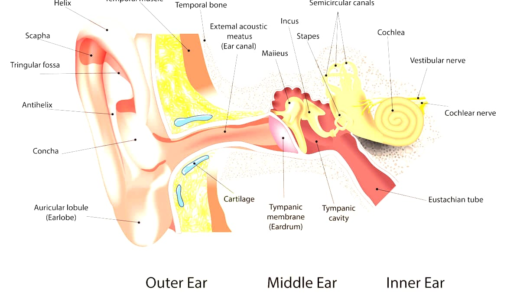The HANS device is essential for preventing head and neck injuries in racing. It works by limiting head movement during crashes, significantly reducing injury risks. Mandated after the death of Dale Earnhardt in 2001, its use has led to a decrease in serious injuries. While praised for its effectiveness, some drivers find it uncomfortable. Other safety devices, like harnesses and fire suits, complement the HANS device, enhancing overall safety in motorsports.
What is the HANS Device?
The HANS device is a crucial safety innovation in motorsports designed to prevent head and neck injuries during high-speed racing. It stands for Head and Neck Support device, and it serves as a restraint system that secures the driver’s head and neck to the car seat. This device is essential in protecting against the forces that act on the body during a crash, especially in scenarios where the head may whip forward or sideways.
How Does the HANS Device Work?
The mechanics of the HANS device are relatively straightforward yet highly effective. The device consists of a lightweight structure made of carbon fiber or similar materials, which attaches to the driver’s helmet with straps. When an impact occurs, the HANS device limits the movement of the head, reducing the risk of serious injuries such as concussions or cervical spine damage. By distributing the forces experienced during a crash across a larger area, it absorbs shock and keeps the head aligned with the spine.
Why Was the HANS Device Created?
The development of the HANS device was a response to the alarming number of fatalities and serious injuries in motorsports, particularly in the late 20th century. Notable incidents, including the tragic death of race car driver Dale Earnhardt in 2001, highlighted the need for better safety measures. The HANS device was created to address these issues, aiming to protect drivers from the dangerous forces experienced during crashes. Its introduction marked a significant advancement in racing safety, ultimately saving countless lives.
Benefits of Using the HANS Device in Racing
The benefits of utilizing the HANS device in racing are extensive. First and foremost, it significantly reduces the risk of life-threatening head and neck injuries. Other advantages include:
- Enhanced driver confidence, knowing they are better protected.
- Compliance with safety regulations in professional racing, as many organizations mandate its use.
- Long-term health benefits, potentially reducing the incidence of chronic pain related to head and neck injuries.
How the HANS Device Prevents Head and Neck Injuries
The HANS device prevents head and neck injuries through its innovative design that restricts excessive head movement. In the event of a collision, the device’s straps connect the helmet to the seat, preventing the head from moving forward or sideways independently of the body. This mechanism is crucial because it minimizes the risk of severe injuries like basilar skull fractures and whiplash. By maintaining a stable head position, the HANS device effectively protects the brain and spinal cord from the dangerous forces encountered during crashes.
When Was the HANS Device Mandated in Professional Racing?
The HANS device became a mandatory safety feature in professional racing following several high-profile accidents that highlighted the need for improved driver protection. The pivotal moment came after the tragic death of Dale Earnhardt during the 2001 Daytona 500, which shocked the racing community. In response, organizations like NASCAR began to enforce the use of the HANS device in 2001, making it a requirement for all drivers.
By 2005, the HANS device was officially mandated across various racing leagues, including Formula 1 and IndyCar. This adoption marked a significant shift in safety standards, as it set a precedent for driver protection in motorsports. The enforcement of the HANS device has led to a substantial decrease in head and neck injuries, reinforcing its importance in the racing world.
Real-Life Examples of the HANS Device Saving Lives
The effectiveness of the HANS device is evident through numerous real-life examples where it has played a crucial role in preventing serious injuries or fatalities. One notable incident occurred in 2009 when Formula 1 driver Felipe Massa suffered a severe head injury from a flying spring during a race. Thanks to the HANS device, he survived the crash with only minor injuries, showcasing the device’s life-saving capabilities.
Another example is the case of NASCAR driver Tony Stewart, who experienced a violent crash in 2013. The HANS device helped protect him from sustaining life-threatening injuries, allowing him to return to racing after recovery. These stories highlight the HANS device’s critical role in enhancing safety and reducing the risk of severe injuries in motorsports.
Evolution of the HANS Device Design
The HANS device has undergone significant evolution since its inception. Initially designed in the 1980s, the early models were bulky and not widely adopted. However, advancements in materials and design have transformed the device into a lightweight, more comfortable safety solution.
Modern HANS devices are crafted from advanced materials like carbon fiber, providing strength without added weight. They have also been designed to fit more comfortably with a wider range of helmets, ensuring that drivers can use them without hindrance. The evolution of the HANS device reflects the ongoing commitment to improving safety in racing, adapting to the needs of drivers while maintaining effective protection against head and neck injuries.
Criticisms or Limitations of the HANS Device
The HANS device has transformed safety in motorsports, yet it is not without its criticisms. One notable concern is its comfort. Some drivers find the device cumbersome or restrictive, particularly during long races. This discomfort can distract drivers, potentially impacting their performance on the track.
Another limitation is the dependency on proper installation and fit. If the HANS device is not correctly adjusted to the driver’s helmet and seat, it may not provide the intended protection. Moreover, some critics argue that while the HANS device is effective against head and neck injuries, it does not address other types of injuries that can occur in crashes, such as chest or abdominal injuries. As a result, while the HANS device is a significant advancement in safety, it should be viewed as part of a broader approach to driver protection, alongside other safety technologies.
Driver Opinions on the HANS Device During Races
Driver feedback on the HANS device varies, reflecting personal preferences and experiences. Many drivers praise its life-saving capabilities, acknowledging that it has significantly reduced the risk of severe head and neck injuries. For instance, several NASCAR drivers have publicly stated that they feel safer knowing they are protected by the device, especially after witnessing accidents involving fellow racers.
However, some drivers express mixed feelings. While they recognize the importance of safety, they sometimes mention discomfort during races or the feeling of being less agile. This feedback highlights the ongoing debate about balancing safety with driver comfort and performance. Ultimately, many agree that despite some drawbacks, the HANS device is a vital safety measure that has saved lives and improved racing standards.
Other Safety Devices Used with the HANS Device
The HANS device is often used in conjunction with other safety devices to enhance driver protection. One of the most common complementary devices is the racing harness, which secures the driver in their seat and minimizes movement during an impact. A properly fitted five or six-point harness works in tandem with the HANS device to keep the driver stable and reduce the risk of injury.
Other safety innovations include foam head surrounds, which cushion the helmet and absorb shock, and impact-absorbing seats designed to minimize forces transferred to the driver’s body. Additionally, fire-resistant suits and helmets further contribute to overall safety, protecting drivers from fire hazards in the event of a crash. Together, these safety measures work cohesively with the HANS device, providing a comprehensive approach to safeguarding drivers in high-risk racing environments.





Comments are closed.